CO-EXIST: Pavilion of China Curated by Ma Yansong Officially Opens at the 19th International Architecture Exhibition—La Biennale di Venezia
The China Pavilion at the 19th International Architecture Exhibition – La Biennale di Venezia, titled CO-EXIST and curated by Ma Yansong, founder and principal partner of MAD, officially opened on Friday, May 9 at the Arsenale.
CO-EXIST explores the evolving dynamic between traditional Chinese spiritual philosophy and accelerating contemporary technology, set against the backdrop of a global shift from industrial civilization to the age of intelligence.
The opening ceremony welcomed Chinese Ambassador to Italy Jia Guide, Deputy Mayor of Venice Massimiliano de Martin, former Italian Deputy Foreign Minister Laura Fincato, representatives of the Hong Kong and Macau Special Administrative Regions of China, curator Ma Yansong, participating architects, and invited guests.
In his remarks, Ma Yansong noted:
“We hope this collective presentation signals a process of transformation—one that is seen and discussed openly—revealing the younger generation’s interpretation of traditional Chinese culture, their proposals rooted in modernity, and their visions for the future. We believe we are entering an era that is diverse, humanized, and emotionally rich. In this context, we aim to offer ideas from China—so that Chinese wisdom may be shared with the world.”
Twelve interdisciplinary exhibitors draw from China’s local traditions, using imagination and Eastern philosophies as a foundation to retranslate cultural heritage and reconnect emotion and nature in the wake of modernism. Their work seeks new methods to recognize, adapt to, and respond to the complexity and diversity of cities within local contexts.
The pavilion represents a collective voice of emerging Chinese architects, collaborating with academic institutions, research centers, technology innovators, and digital ecology builders. Embracing a “one place, one solution” approach, they collapse time, discipline, and method—offering visions that reflect traditional Eastern roots, critique contemporary urban development, and imagine new futures for China’s cities, dwellings, and ways of life.
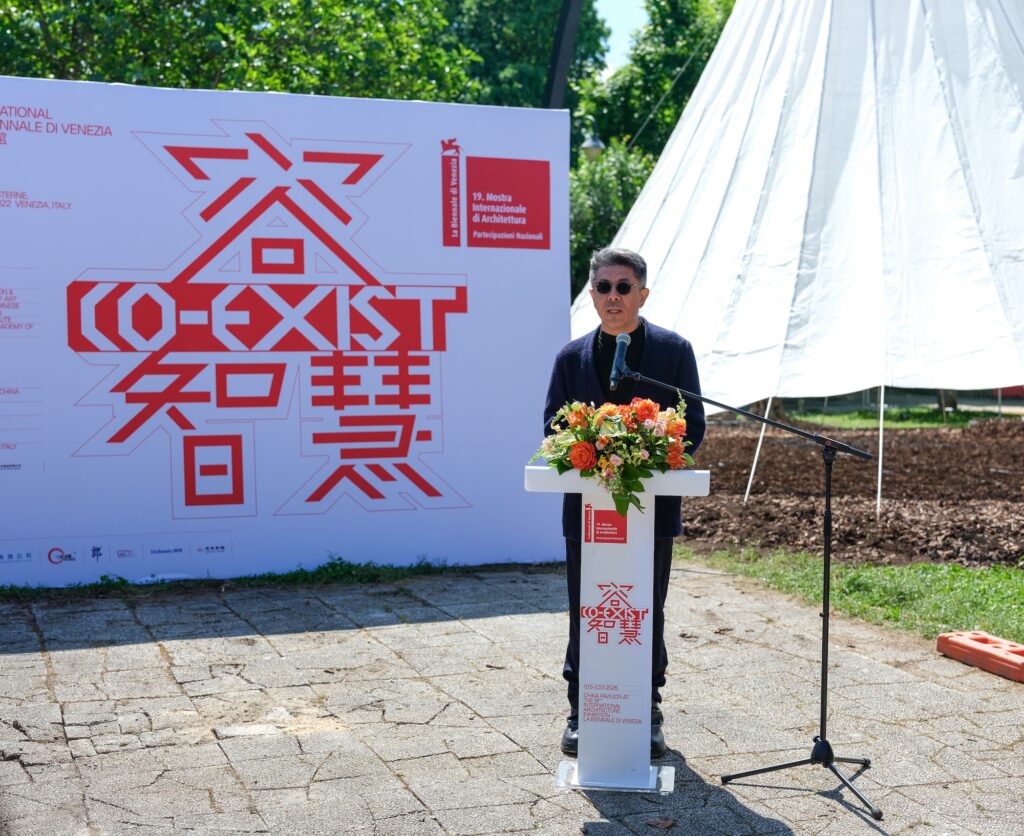
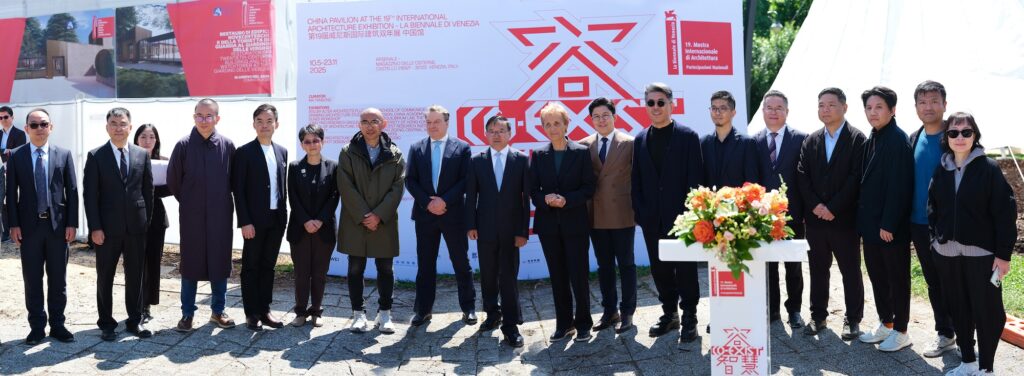
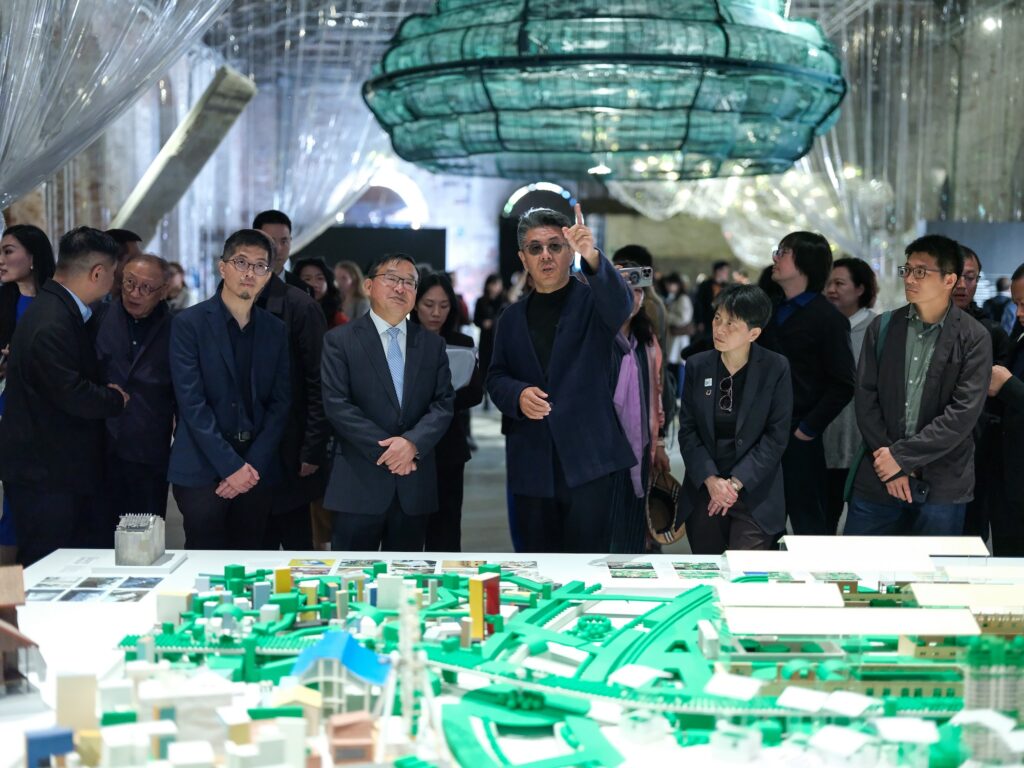
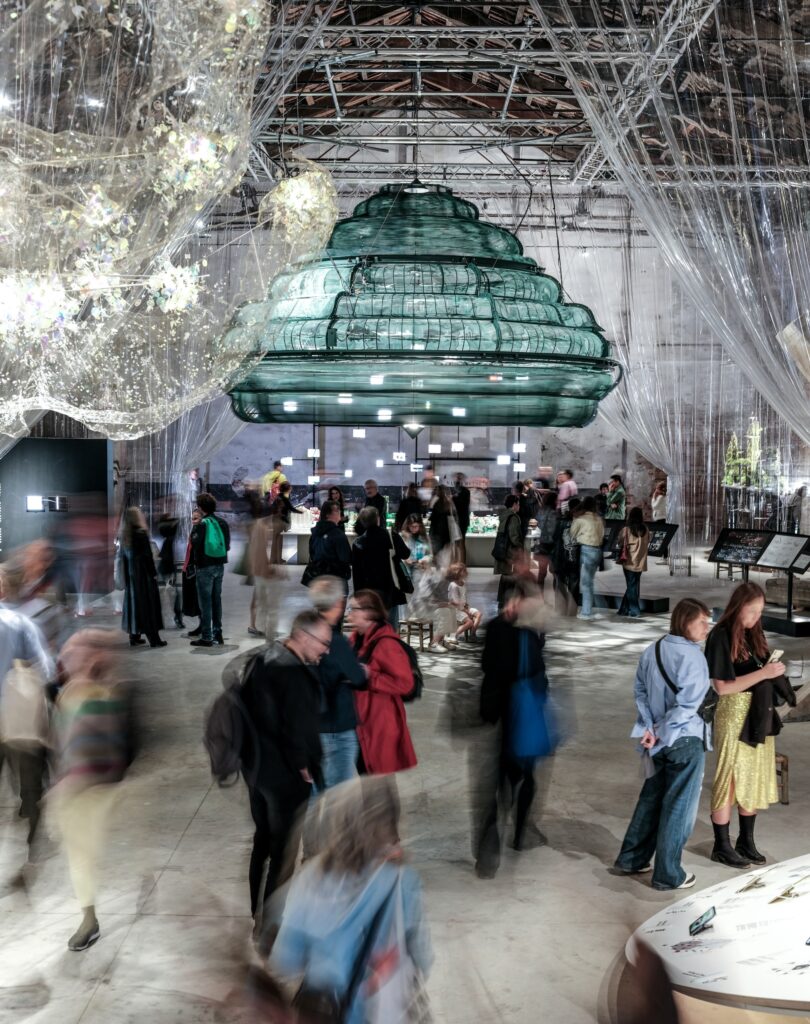
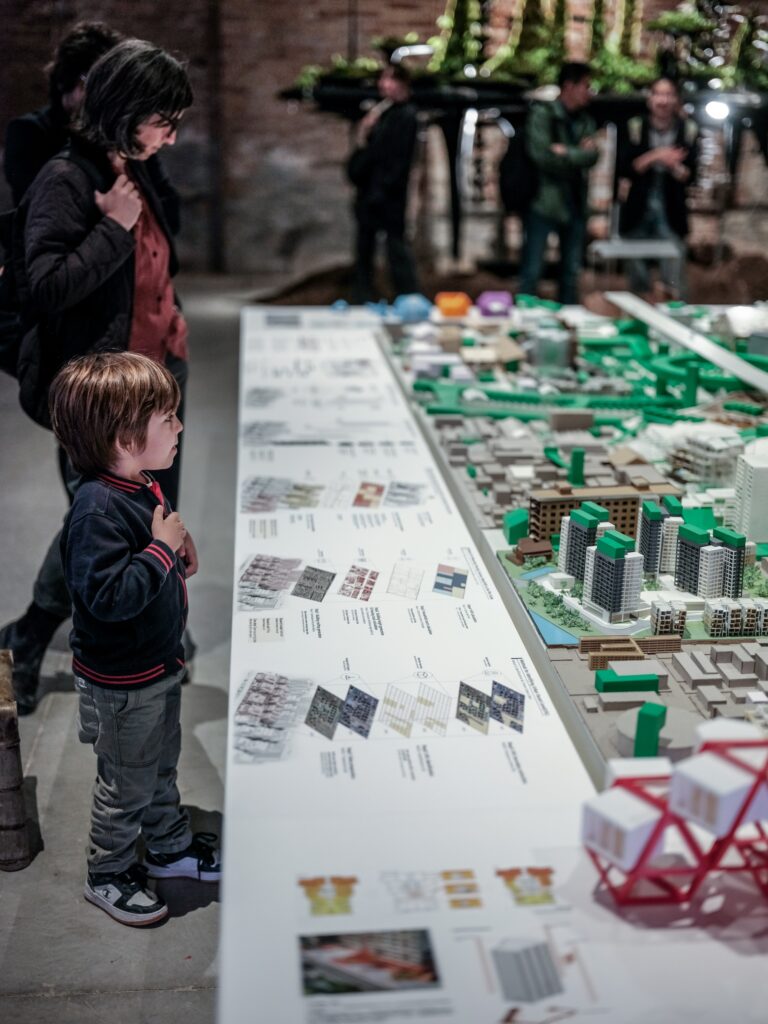
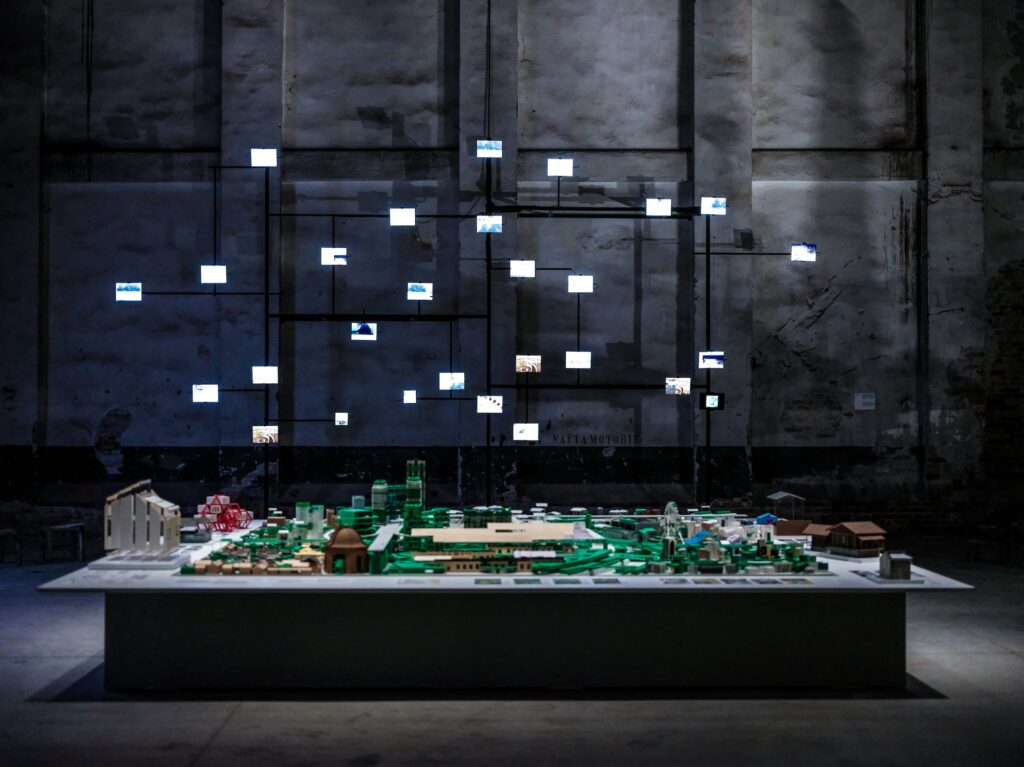
Featured Exhibits
12 Rhythms in Liangzhu
China Academy of Art, School of Communication & Design
This installation interprets the sacrificial rituals and music of the Liangzhu city-state—an early cradle of Chinese civilization—as a dialogue between heaven, earth, and humanity. Using traditional instruments like chimes, guqin, and pottery flutes, the piece constructs a resonant ritual space linking ancient memory to speculative futures.
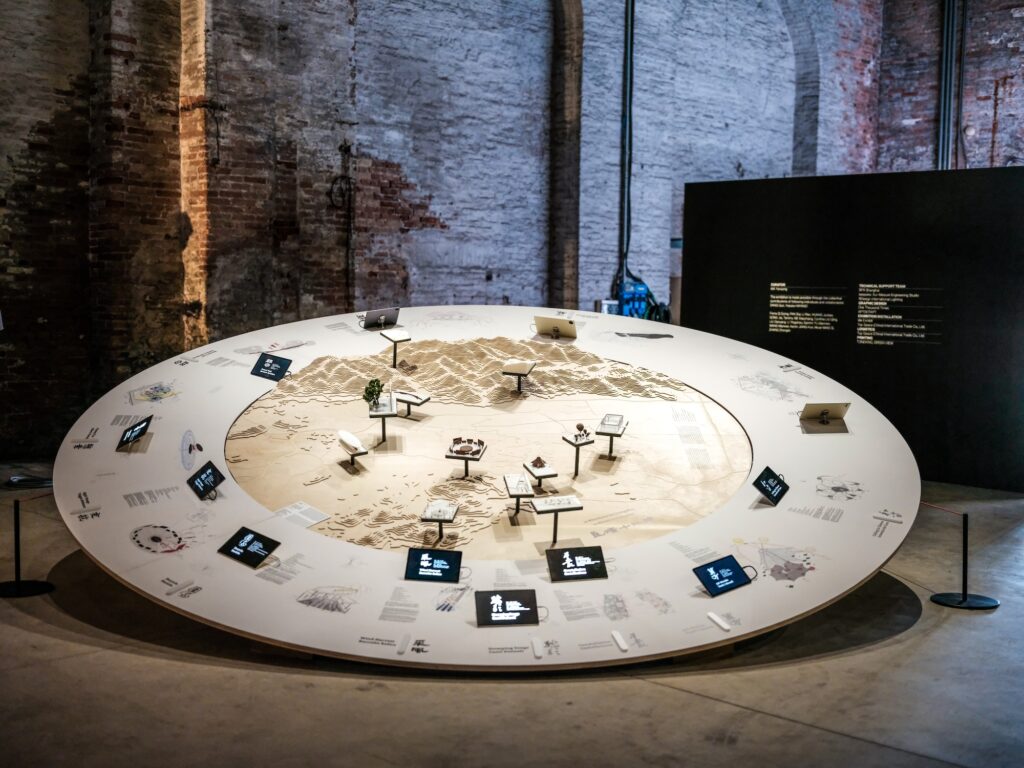
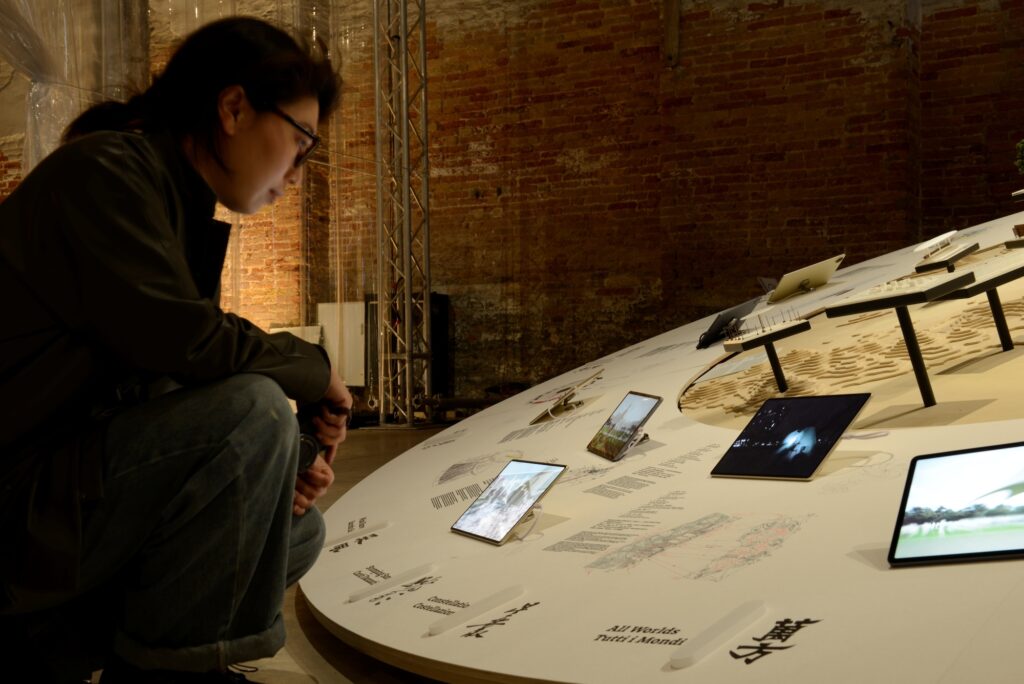
Dunhuang·Con-Stella-Tion
Atelier Alter Architects PLLC
This piece reimagines the multi-religious vaults of Dunhuang as a floating urban cosmos. Each structure reflects the cosmology of a distinct civilization—embracing cultural differences and celebrating coexistence.

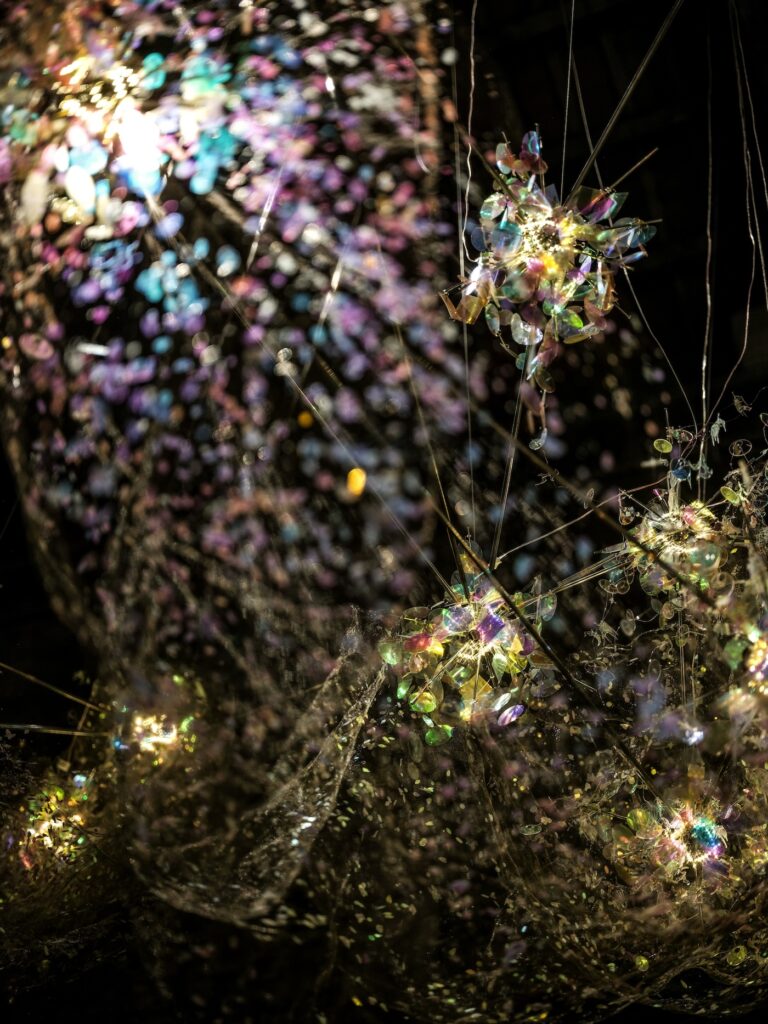
Spring, Along Beijing Central Axis
Dunes Workshop
Following Beijing’s successful 2024 bid to list its Central Axis as a UNESCO World Heritage site, this video installation poetically maps 10 key sites along the axis using point cloud animation, blending soundscapes of nature and humanity to visualize the axis as a living embodiment of ancient Chinese urban planning.

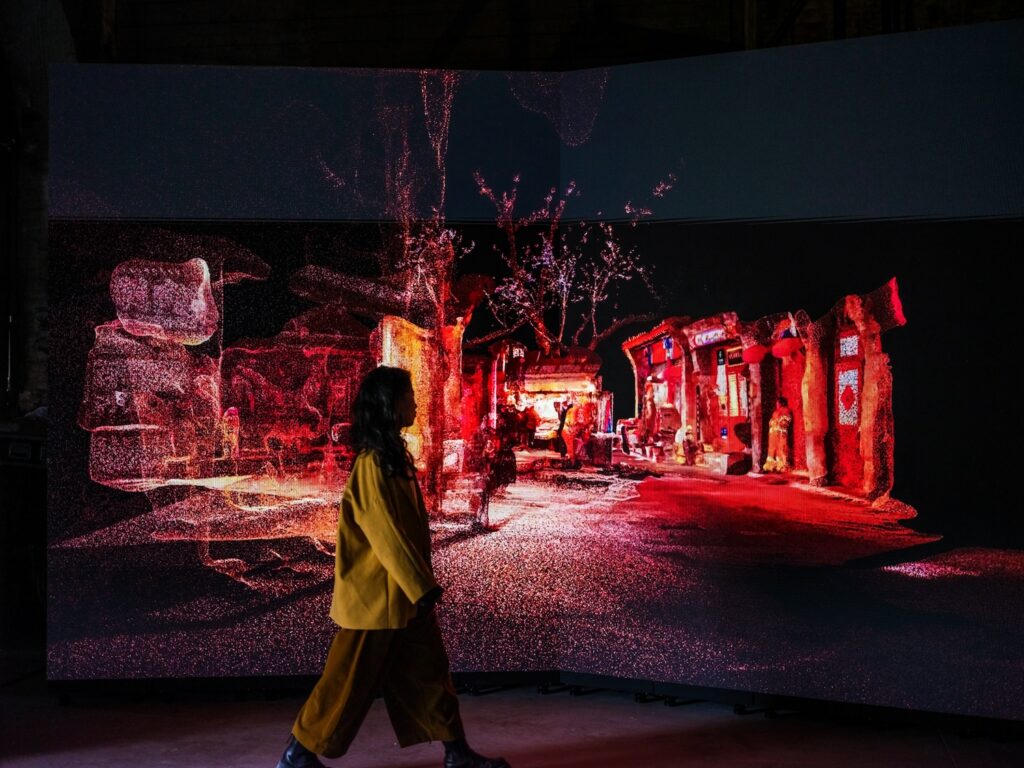
Vault of Heaven
Wang Zigeng, Central Academy of Fine Arts
Green construction netting—ubiquitous in China’s rapid urbanization—is transformed into a cascading dome inspired by the “sky” of ancient Chinese well architecture. The work weaves fragmented memories of modernization into a spiritual dialogue between humans and the cosmos.
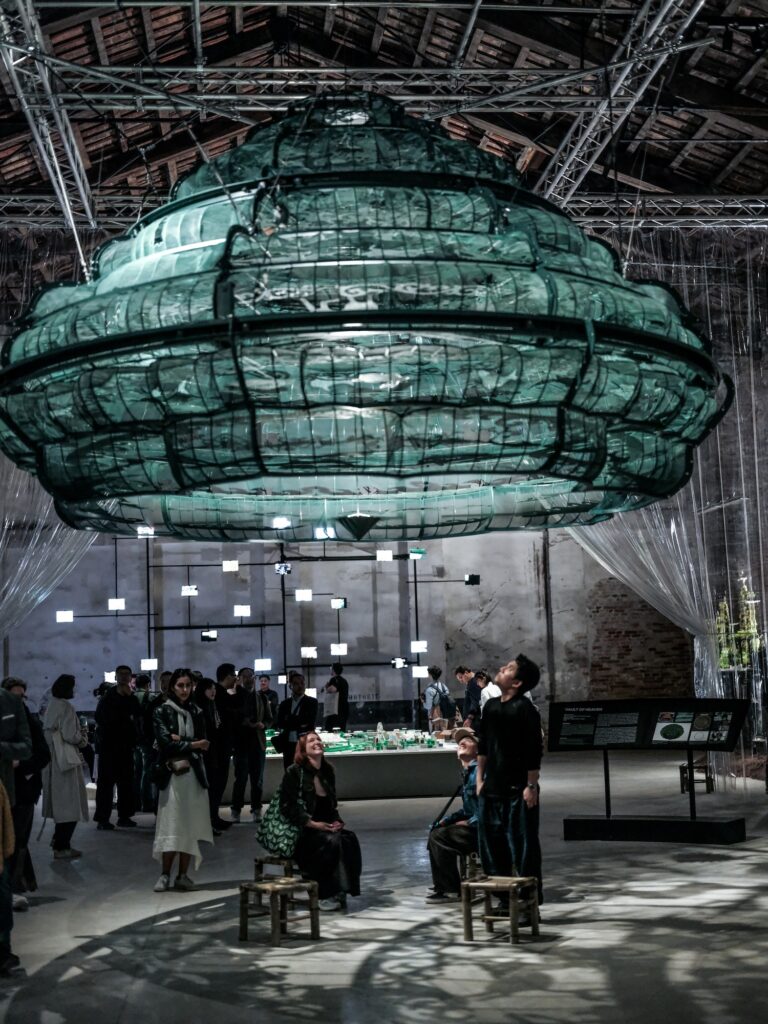
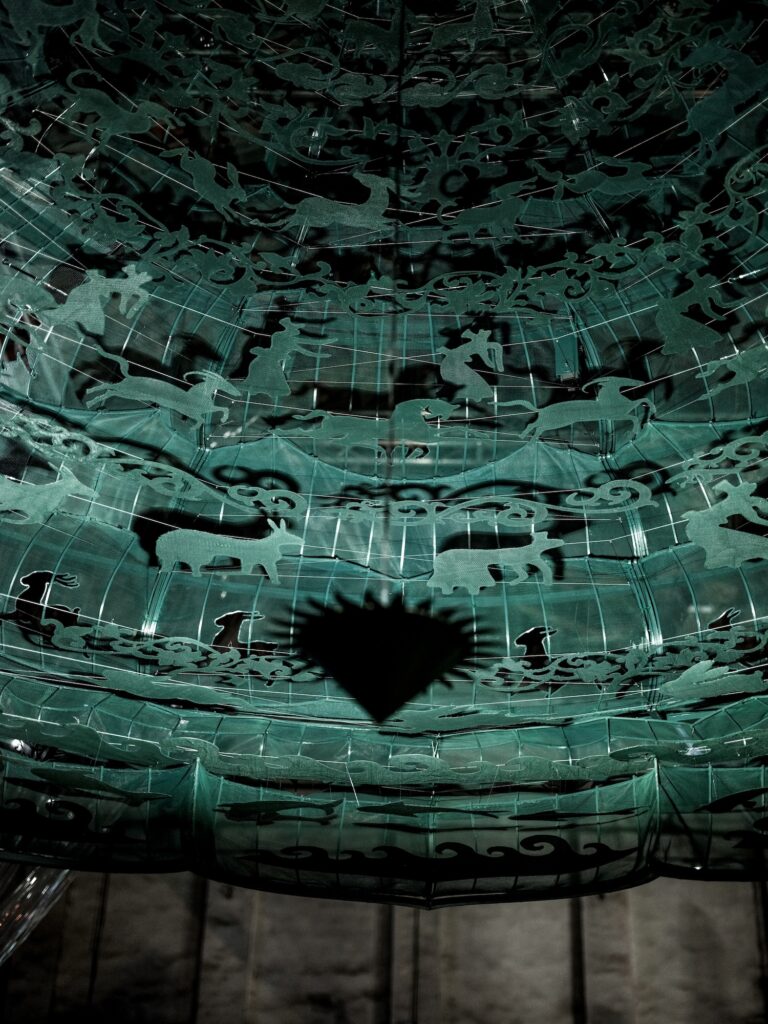
Concrete Spolia: Reuse of Building Waste
[S]Equilibrium Lab, The Chinese University of Hong Kong
This installation repurposes concrete construction waste from Venice using advanced industrial processes. The resulting sculptural piece demonstrates the potential of sustainable reuse while preserving the structural logic of its original components.
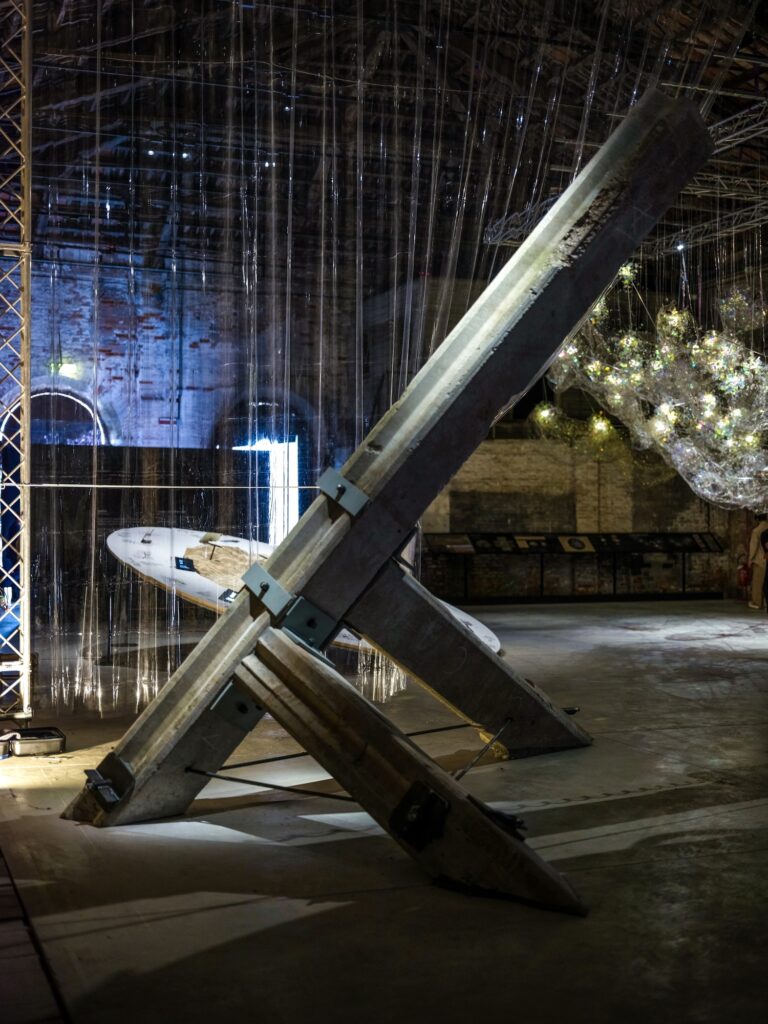
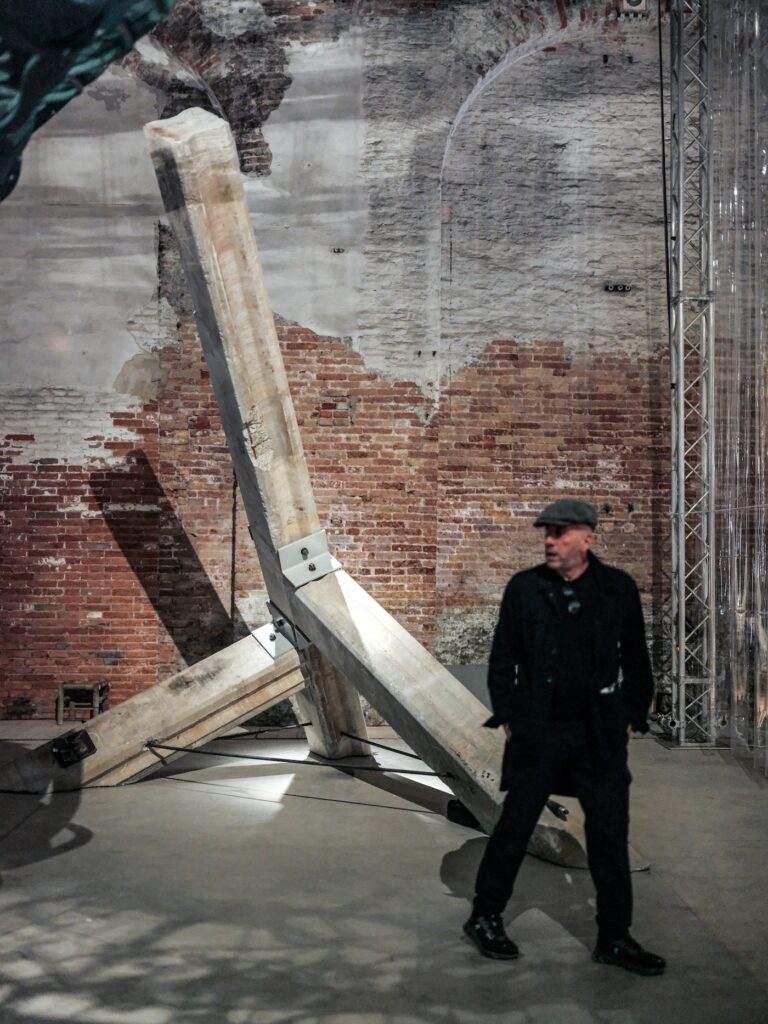
Renew City Plugins
People’s Architecture Office; Long Ying Research Group, Tsinghua University
This collaborative project explores urban revitalization through AI and open-source spatial analysis. “Plugins” are then deployed to upgrade underutilized city spaces, increasing efficiency and reactivating public life.
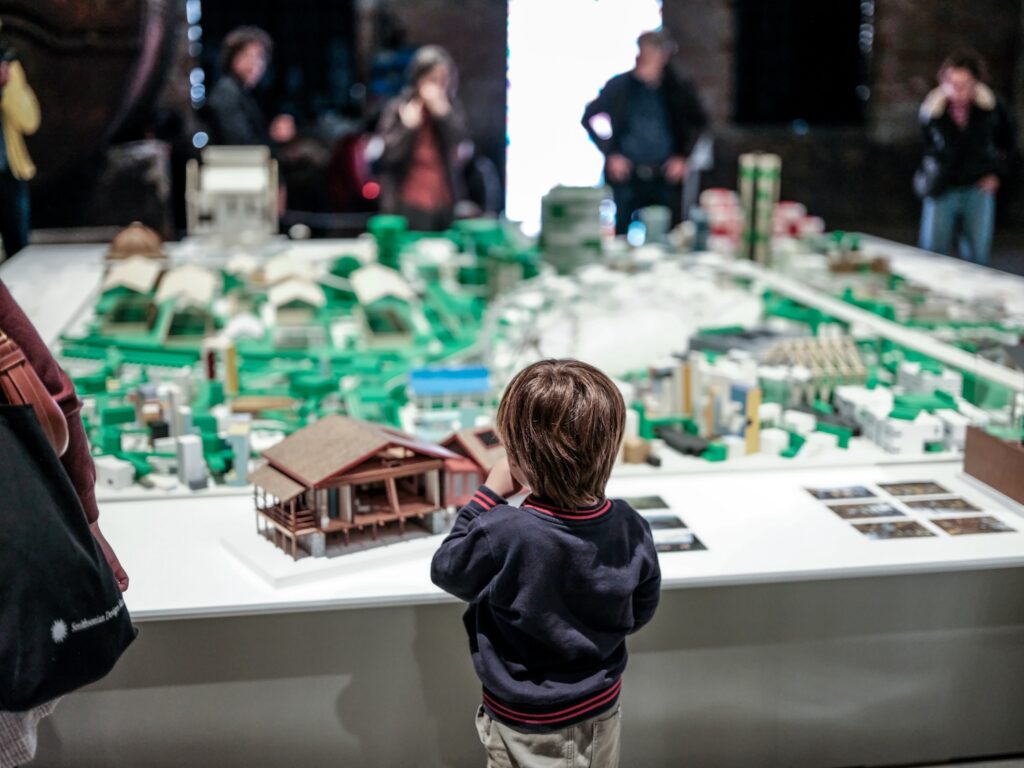
City in China – Nature of All Things
WAY Studio; Tencent Research Institute
Amid dense megacities, this concept envisions vertical urban ecologies that integrate botanical systems into upward transport infrastructures—reimagining skyscrapers as living networks.
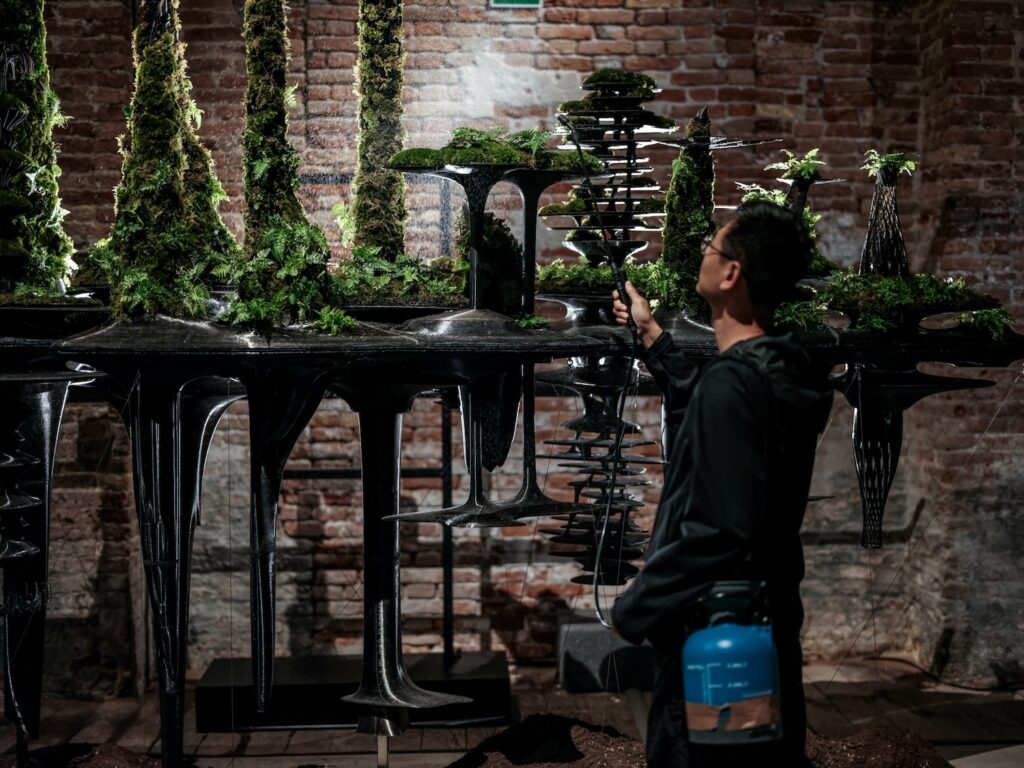
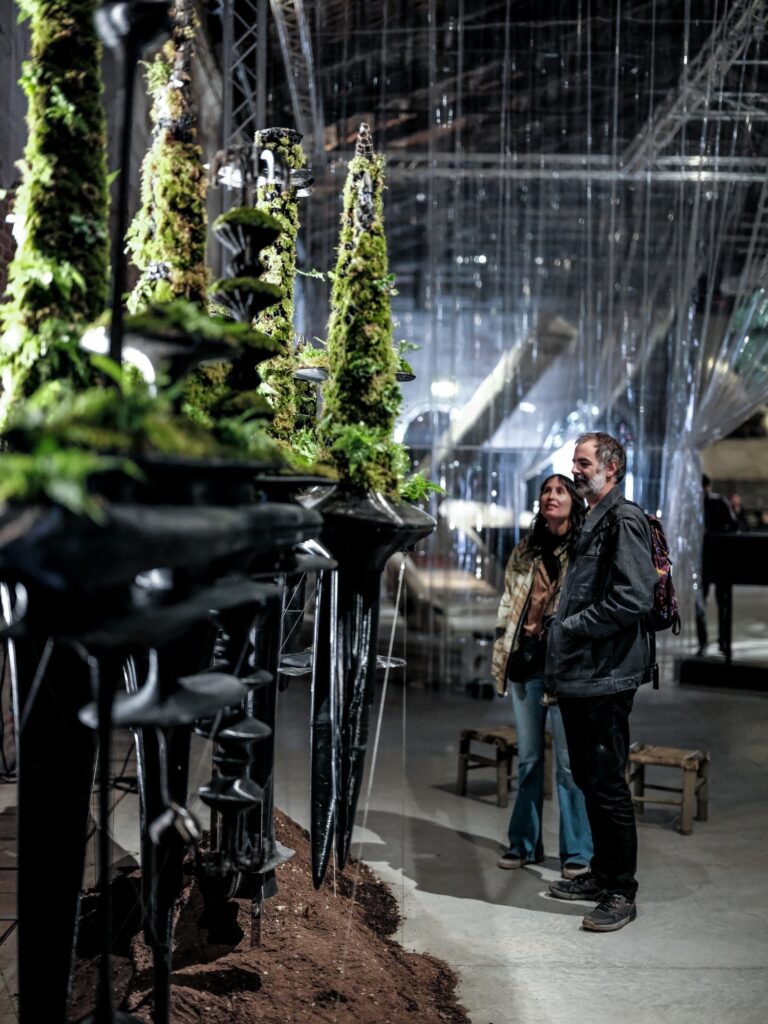
Open Source City
Red Product Design Center (Xiaohongshu/The Rednote)
By translating social media interaction data into spatial design elements, this project repositions everyday users as co-authors of the city, turning digital behavior into dynamic public spaces.
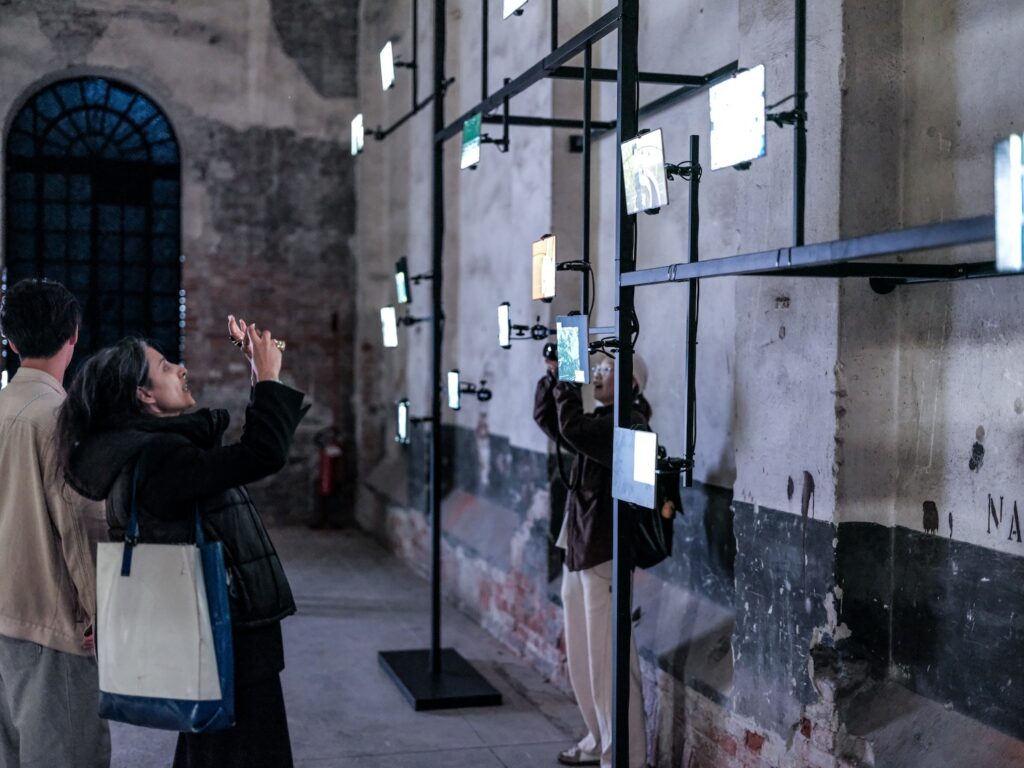
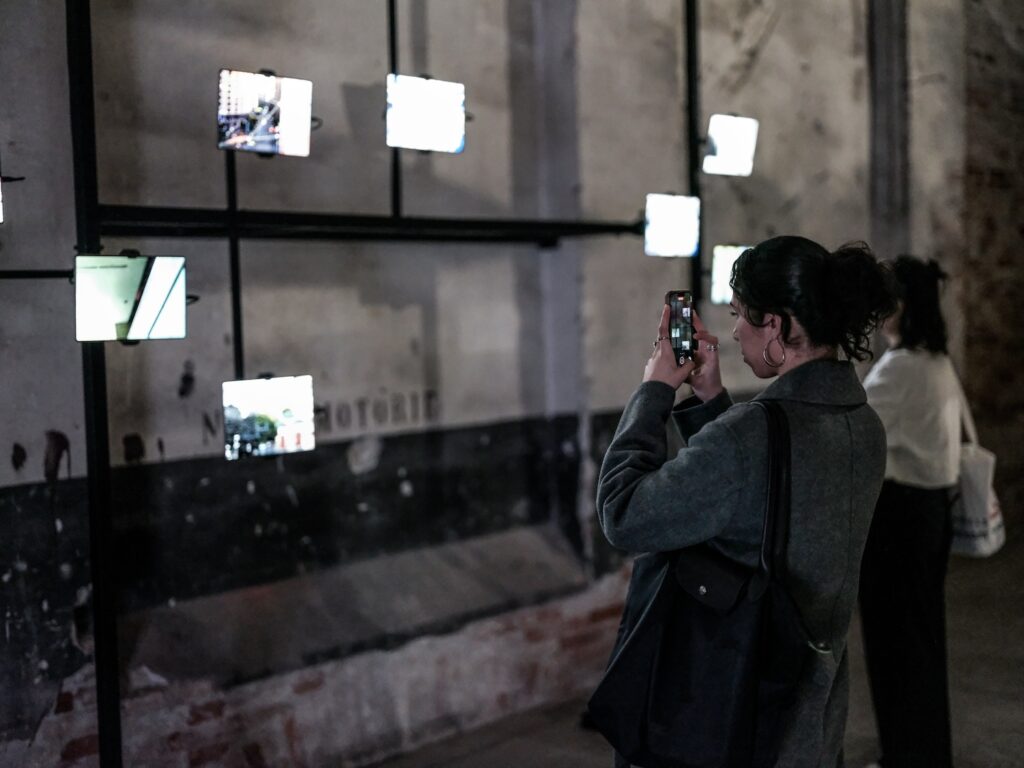
Interchange City
Drawing Architecture Studio
This work celebrates informal, often overlooked spaces beneath highway overpasses. These marginal zones are reframed as sites of human vitality and alternative urban narratives.
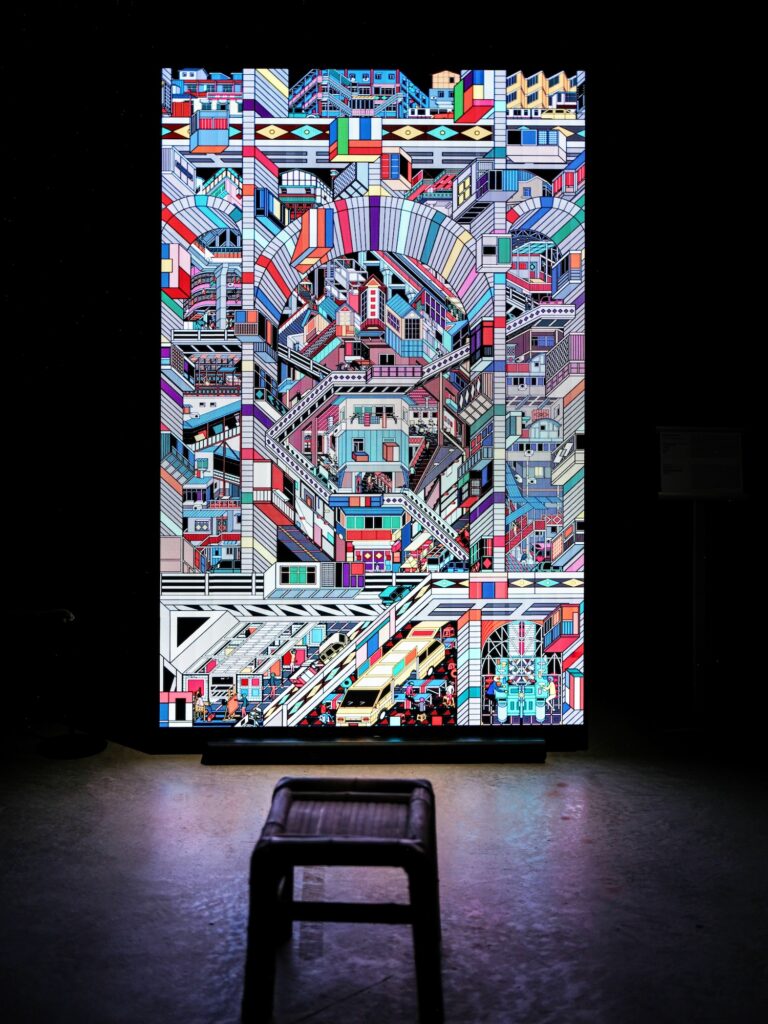
Chinese Paper Umbrella
MAD
Reinterpreting the Chinese oil-paper umbrella through modern architectural logic, this installation creates an outdoor microclimate space that is both practical and poetic—merging tradition and environmental sensitivity.
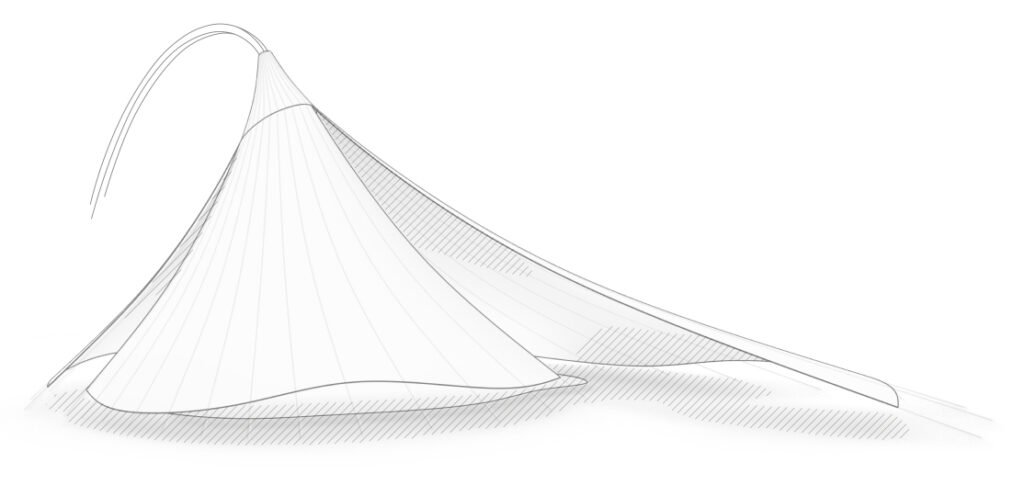
CO-EXIST will remain on view through November 23, 2025, at the Arsenale’s Magazzino delle Cisterne, Castello 2169/F, 30122 Venice, Italy.
Pavilion Details:
CO-EXIST
Pavilion of China at the 19th International Architecture Exhibition—La Biennale di Venezia
Dates: May 10, 2025 – November 23, 2025
Venue: Arsenale – Magazzino Delle Cisterne, Castello 2169/F – 30122 Venezia, Italy
Curator: Ma Yansong
Participating Architects: Atelier Alter Architects PLLC , Zhang Yingfan, Bu Xiaojun
Drawing Architecture Studio,Li Han, Hu Yan, Zhang Xintong
Dunes Workshop , Li Yalun, Chen Feiyue, Zhang Daisy Ziyan
People’s Architecture Office, Long Ying Research Group, School of Architecture, Tsinghua University
MAD, Ma Yansong, Dang Qun, Yosuke Hayano
RED Product Design Center
China Academy of Art, School of Communication & Design, Jiang Jun
[S]Equilibrium Lab, The Chinese University of Hong Kong, Wang Shuaizhong
Wang Zigeng, Central Academy of Fine Arts
WAY Studio,Zheng Tao, Fernie Lai
Authorities:
Organizer: Ministry of Culture and Tourism of the People’s Republic of China
Co-Organizer: China International Culture Association
Commissioner: China Arts and Entertainment Group Ltd. (CAEG)
Executive Agency: China International Exhibition Agency
Supporter: Embassy of the People’s Republic of China in the Republic of Italy
Sponsors:
Chief Intelligence and Technology Partner: Huawei
Chief Lighting Partner: OPPLE Lighting
Co-Presenting Partner: China Construction Eighth Bureau Technology Construction Co., Ltd., NorthGlass
Exclusive Gala Dinner Partner: Langjiu
Contributing Partner: QZY Models
Supported by: Far East Façade, Unilumin Group Co., Ltd.
Team:
The exhibition is made possible through the collective contributions of the following individuals and collaborators:
Dang Qun, Yosuke Hayano
Fiona Qi Ziying, Pan Siyi, Li Ran, Huang Juntao, Zhu Yuanlong, Valentina Olivieri, Zheng Chengwen, Song Jia, Tammy Xie Xiaozhang, Cynthia Liu Qing, Liu Danyang, Li Yingzhou, Sammi Yu Qiannan, Wang Manwei, Aaron Jiang Kuo, Muse Miao Si, Zhang Zhonglin
Collaborators and Supporters:
Technical Support Team: RFR Shanghai, bespoke. Sur-Mesure Engineering Studio, RDesign International Lighting
Graphic Design: One Thousand Times, aptdotapt
Exhibition Installation: We Exhibit, Top Space (China) International Trade Co., Ltd
Logistics: Top Space (China) International Trade Co., Ltd
Printing: TONEKING, GREEN VIEW
Editing and proofreading:Deng Yingying, Wang Wenyang


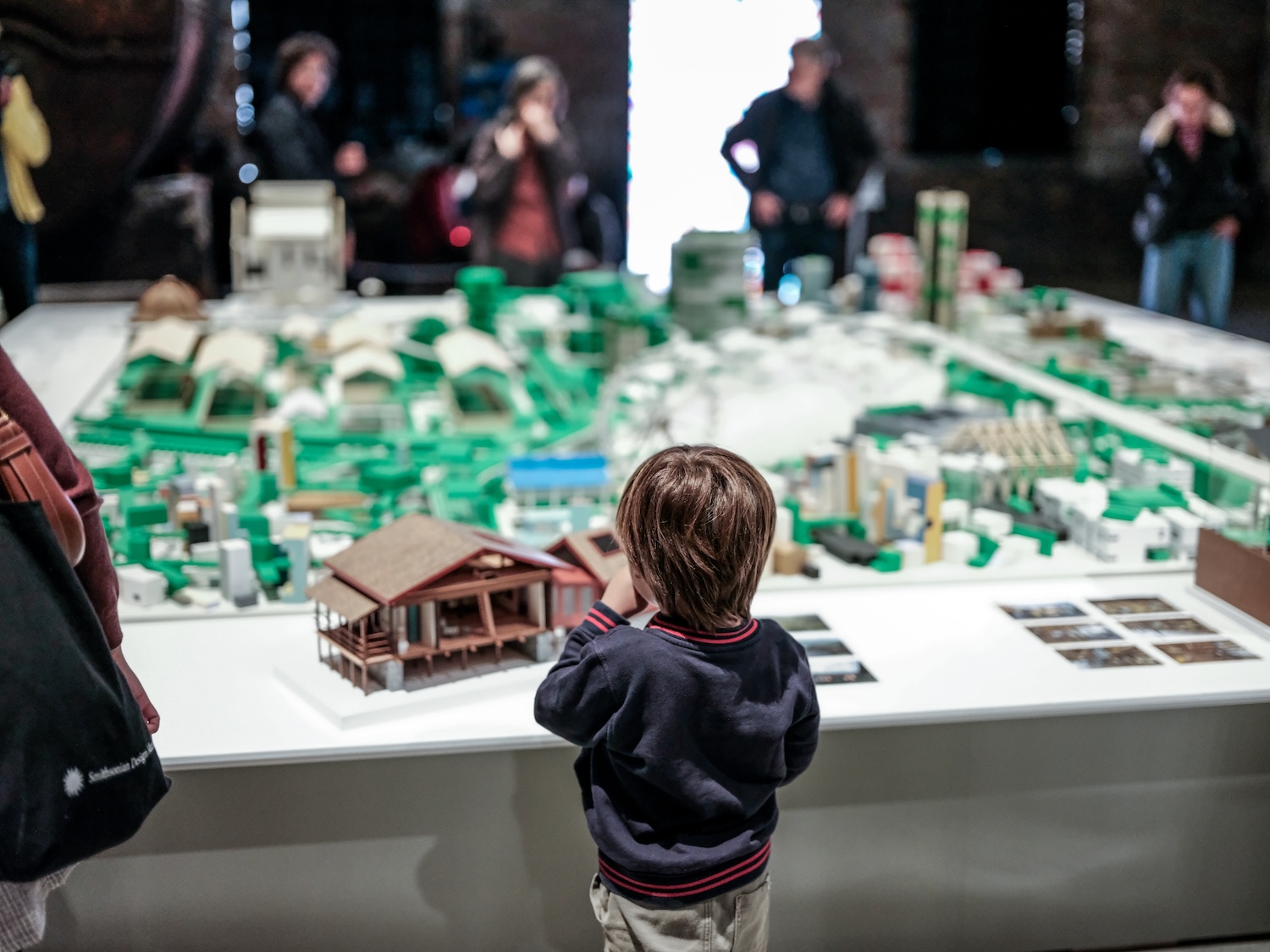

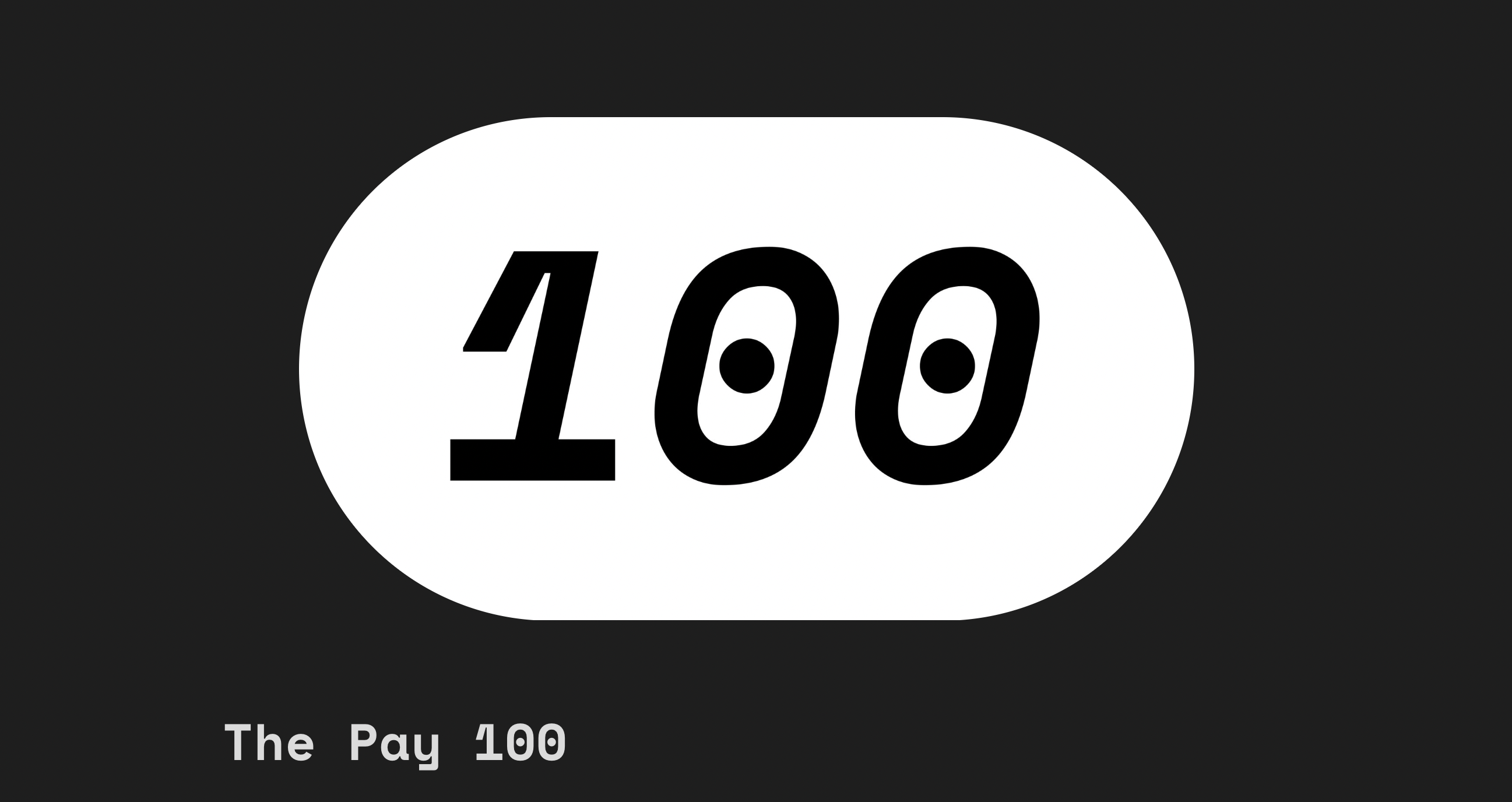

Leave a Reply